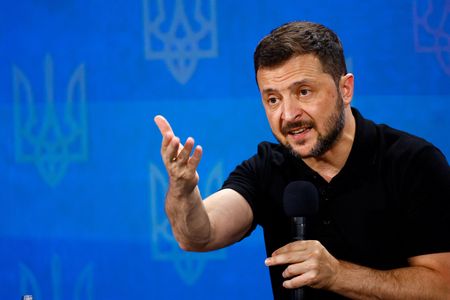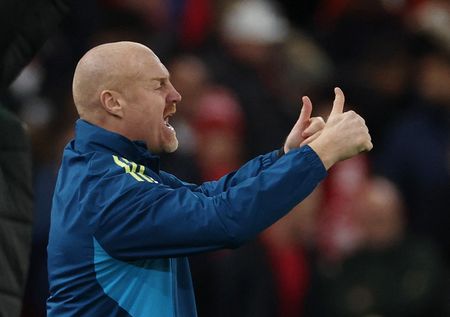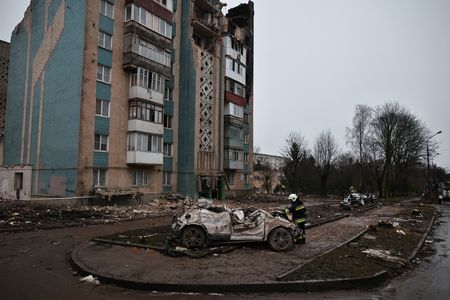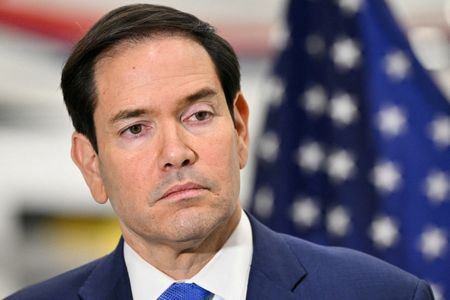LONDON (Reuters) – Ukraine wants to follow up its newly inked $20 billion debt restructuring by tackling another $2.6 billion worth of GDP warrants, bond-like instruments that pay out substantial sums when the country’s economic growth exceeds certain thresholds.
Here are some key details on how the warrants work and why Kyiv wants to replace them.
WHAT IS THE PROBLEM?
Ukraine is concerned that the warrants in their current form will cost it tens of billions of dollars in the coming decade as the country’s economy readjusts after Russia’s 2022 invasion.
Kyiv also needs to deal with the warrants as part of its agreement with international backers. The International Monetary Fund had pushed for a debt restructuring to improve the country’s finances as part of its $15.6 billion loan programme.
In a statement on Wednesday, after reaching a preliminary agreement on the next disbursement of that money, the Fund reiterated that the warrants would need to be “treated in line with the programme’s strategy to restore debt sustainability”.
HOW DO THEY WORK?
Ukraine threw in the GDP warrants – fixed income securities indexed to economic growth – to sweeten its previous 2015 restructuring that forced investors to write off 20% of the original value of their holdings.
They pay no regular interest or principal, but kick in once Ukraine’s nominal gross domestic product (GDP) exceeds $125.4 billion and annual growth hits 3%. Until next year their annual payouts cannot exceed 0.5% of GDP but after that, until expiry in 2041, there is no upper limit.
The payouts are subject to a complex formula but, put very simply, holders are entitled to a sum equal to 15% of any economic output achieved above the 3% growth threshold, adjusted for inflation.
Should the economy expand 4% or more, holders will take away no less than 40% of national wealth created above that higher level.
HOW MUCH COULD THEY COST UKRAINE?
It could easily run into the tens of billions of dollars between now and 2041.
Major institutions are expecting Ukraine’s growth rate to growth rate to accelerate to around 6% as soon as next year and it is likely to stay strong for years if and when a larger rebuilding effort starts.
WHAT DOES UKRAINE WANT TO DO?
The government has the option to buy back the warrants by exercising what is known as a ‘call’ option. It can do that anytime until August 2027, but it would need to pay the warrantholders in full to do so. Given the war with Russia and financial pressures Ukraine is under, finding the necessary $2.6 billion would be tough.
Kyiv could offer to replace them with something less burdensome and more predictable like a traditional bond – albeit one which is likely to require some decent incentives to convince the warrantholders to switch.
It has promised to give them “fair and equitable treatment” in any renegotiation, but says that if it doesn’t tackle the problem it faces “exceptionally high and unforeseen payments”.
WHAT ABOUT THE WARRANTS’ HOLDERS?
They are preparing for a tussle. An undisclosed number of warrant-owning investment funds have formed a group which they say owns enough of the debt to legally block any changes that they disagree with.
Some of those involved argue that they already made a number of sacrifices to help Kyiv, such as postponing payments and lowering the pre-2025 GDP cap amount to 0.5% from 1%, which has also saved it money over the past couple of years.
IS THIS LIKELY TO GET RESOLVED?
Yes, according to Kyiv, although it could take some time. Ukraine needs to strike a deal so that it and its major international backers have a clearer picture of its debts, while warrantholders want to avoid a situation where Ukraine simply refuses to pay.
(Reporting by Marc Jones, additional reporting by Karin Strohecker; Editing by Emelia Sithole-Matarise)











